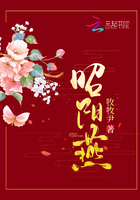Formerly the garden species was thought to be a native, not of our prairies, but of Mexico and Peru, because the Spanish conquerors found it employed there as a mystic and sacred symbol, much as the Egyptians employed the lotus in their sculpture.In the temples the handmaidens wore upon their breasts plates of gold beaten into the likeness of the sunflower.But none of the eighteen species of helianthus found south of our borders produces under cultivation the great plants that stand like a golden-helmeted phalanx in every old-fashioned garden at the North.Many birds, especially those of the sparrow and finch tribe, come to feast on the oily seeds; and where is there a more charming sight than when a family of goldfinches settle upon the huge, top-heavy heads, unconsciously forming a study in sepia and gold?
On prairies west of Pennsylvania to South Dakota, Missouri, and Texas, the SAW-TOOTH SUNFLOWER (H.grosse-serratus) is common.
Deep yellow instead of pale rays around a yellowish disk otherwise resemble the tall sunflower's heads in appearance as in season of bloom.The smooth stalk, with a bluish-hoary bloom on its surface, may have hairs on the branches only.Long, lance-shaped, pointed leaves, the edges of lower ones especially sharply saw-toothed, their upper surface rough, and underneath soft-hairy, are on slender, short petioles, the lower ones opposite, the upper ones alternate.Honeybees find abundant refreshment in the tubular disk florets in which many of their tribe may be caught sucking; brilliant little Syrphidae, the Bombilius cheat, and other flies come after pollen; butterflies feast here on nectar, too and greedy beetles, out for pollen, often gnaw the disks with their pinchers.
Very common in dry woodlands and in roadside thickets from Ontario to Florida, and westward to Nebraska, is the ROUGH ORWOODLAND SUNFLOWER (H.divaricatus).Its stem, which is smooth nearly to the summit, does not often exceed three feet in height, though it may be less, or twice as high.Usually all its wide-spread leaves are opposite, sessile, lance-shaped to ovate, slightly toothed, and rough on their upper surface.Few or solitary flower-heads, about two inches across, have from eight to fifteen rays round a yellow disk.
The THIN-LEAVED or TEN-PETALLED SUNFLOWER (H.decapetalus), on the contrary, chooses to dwell in moist woods and thickets, beside streams, no farther west than Michigan and Kentucky.Its smooth, branching stem may be anywhere from one foot to five feet tall; its thin, membranous, sharply saw-edged leaves, from ovate to lance-shaped, with a rounded base, roughest above and soft underneath, are commonly alternate toward the summit, while the lower ones, on slender petioles, are opposite.There are by no means always ten yellow rays around the yellow disks produced in August and September; there may be any number from eight to fifteen, although this free-flowering species, like the PALE-LEAVED WOOD SUNFLOWER (H.strumosus), an earlier bloomer, often arranges its "petals" in tens.
JERUSALEM ARTICHOKE, EARTH APPLE, CANADA POTATO, GIRASOLE (H.
tuberosus), often called WILD SUNFLOWER, too, has an interesting history similar to the dark-centered, common garden sunflower's.
In a musty old tome printed in 1649, and entitled "A Perfect Description of Virginia," we read that the English planters had "rootes of several kindes, Potatoes, Sparagus, Carrets and Hartichokes" - not the first mention of the artichoke by Anglo-Americans.Long before their day the Indians, who taught them its uses, had cultivated it; and wherever we see the bright yellow flowers gleaming like miniature suns above roadside thickets and fence rows in the East, we may safely infer the spot was once an aboriginal or colonial farm.White men planted it extensively for its edible tubers, which taste not unlike celery root or salsify.As early as 1617 the artichoke was introduced into Europe, and only twelve years later Parkinson records that the roots had become very plentiful and cheap in London.The Italians also cultivated it under the name Girasole Articocco (sunflower artichoke), but it did not take long for the girasole to become corrupted into Jerusalem, hence the name Jerusalem Artichoke common to this day.When the greater value of the potato came to be generally recognized, the use of artichoke roots gradually diminished.Quite different from this sunflower is the true artichoke (Cynara Scolymus), a native of Southern Europe, whose large, unopened flower-heads offer a tiny edible morsel at the base of each petal-like part.
The Jerusalem artichoke sends up from its thickened, fleshy, tuber-bearing rootstock, hairy, branching stems six to twelve feet high.Especially are the flower-stalks rough, partly to discourage pilfering crawlers.The firm, oblong leaves, taper pointed at the apex and saw-edged, are rough above, the lower leaves opposite each other on petioles, the upper alternate.The brilliant flower-heads, which are produced freely in September and October, defying frost, are about two or three inches across, and consist of from twelve to twenty lively yellow rays around a dull yellow disk.The towering prolific plant prefers moist but not wet soil from Georgia and Arkansas northward to New Brunswick and the Northwest Territory.Omnivorous small boys are not always particular about boiling, not to say washing, the roots before eating them.
LANCE-LEAVED TICKSEED; GOLDEN COREOPSIS
(Coreopsis lanceolata) Thistle family Flowers-heads - Showy, bright golden yellow, the 6 to io wedge-shaped, coarsely toothed ray florets around yellowish disk florets soon turning brown; each head on a very long, smooth, slender footstalk.Stems.1 to 2 ft.high, tufted.Leaves: A few seated on stem, lance-shaped to narrowly oblong; or lower ones crowded, spatulate, on slender petioles.
Preferred Habitat - Open, sunny places, moist or dry.















